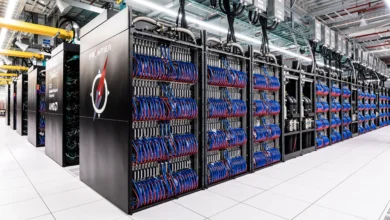
Potential Advantages of Mileage Fees
Mileage fees would be keyed to the amount of vehicle travel rather than to fuel consumption, and this should provide a more stable revenue stream in future decades. Mileage fees offer several additional policy benefits as well. Depending on how the system is implemented, per-mile fees could be structured to alleviate vexing transportation-related problems; improve driver experience through technology-based innovations; and collect detailed, and anonymous, travel data to support better planning and operations.
Mileage fees could support fee structures that would reduce traffic congestion, excessive road wear, and harmful emissions.
Reducing Traffic Congestion
By varying the per-mile charge based on time of day and travel location, mileage fees could facilitate congestion pricing across all crowded segments of the road network. The Puget Sound Regional Council conducted trials several years ago to examine this concept and found it to be generally effective in reducing overall traffic, especially during peak hours.
The state of Minnesota is exploring a similar concept in its ongoing mileage fee trials.
Reducing Road Wear
Heavy commercial trucks cause significantly more road damage than lighter passenger vehicles. To help reduce excessive road wear, mileage fees for trucks could vary based on axle weight (higher for trucks with fewer axles) and type of route (higher for travel on lightly engineered routes). This would encourage truckers to adopt trailer configurations designed to reduce axle loads and to travel, where possible, on heavily engineered highways or main arterials.
The state of Oregon, which has levied manually recorded weight–distance truck tolls for many years, has recently been experimenting with automated, electronic recordings.
Reducing Harmful Emissions
Mileage fees could be set higher for more-polluting vehicles and lower for less-polluting vehicles. This would create an incentive for drivers, when purchasing a new vehicle, to select models with lower emissions.
This approach has been used for a truck toll in Germany, where the least-polluting vehicles pay almost 50 percent less per kilometer than the most-polluting vehicles. Since its launch in 2005, the emissions-based price structure has rapidly accelerated the replacement of older trucks with newer, low-emissions models.
Mileage Metering Equipment Provides Value-Added Amenities for Drivers
A mileage-fee system must at minimum be able to accurately meter mileage, collect a payment, prevent evasion of fees, and protect driver privacy. Multiple technical options exist for achieving each of these requirements, presenting system planners with a range of considerations.
Pay-as-you-drive Auto Insurance
Instead of paying a fixed annual insurance premium, drivers could pay by the mile. Such a system would give those who drive fewer miles the opportunity to save hundreds of dollars on their insurance each year.
Automated Parking Payment
In-vehicle metering equipment could be configured to allow for automated payment of parking charges, eliminating the need to pay at meters or multi-space parking machines. Drivers could pay for the actual time that they occupied the space, with no more need to “leave extra time on the meter.” Systems could be designed to generate payment summaries for those who need to report parking fees as a business expense. And cities might forgo issuing parking tickets and instead allow drivers to remain in parking spaces beyond the posted time limit but at a significantly higher rate.
Automated Toll Payment
On toll roads where both cash and electronic payments are accepted, and for users who have not yet acquired an electronic tolling transponder, in-vehicle metering equipment could support automated toll payments, eliminating the need to stop at the tollbooth and have cash in hand.
Location-Dependent Travel Services
The in-vehicle equipment could share many features associated with personal navigation devices, such as real-time routing assistance based on current traffic conditions or identification of nearby points of interest.
Communications
In-vehicle devices could provide satellite radio or serve as a Wi-Fi node for passengers. This could lead to a broad range of in-vehicle wireless applications such as parking location and reservation services, as well as more general
web-based commercial services.
Improved Safety
As envisioned by the US Research and Innovative Technology Administration’s connected vehicle program, sophisticated in-vehicle equipment could support numerous potential safety features, such as alerting
the driver of school zones, construction zones, hazardous conditions, or traffic incidents; warning the driver of imminent collisions from sudden lane changes or braking vehicles; and allowing the driver to send emergency distress signals.






